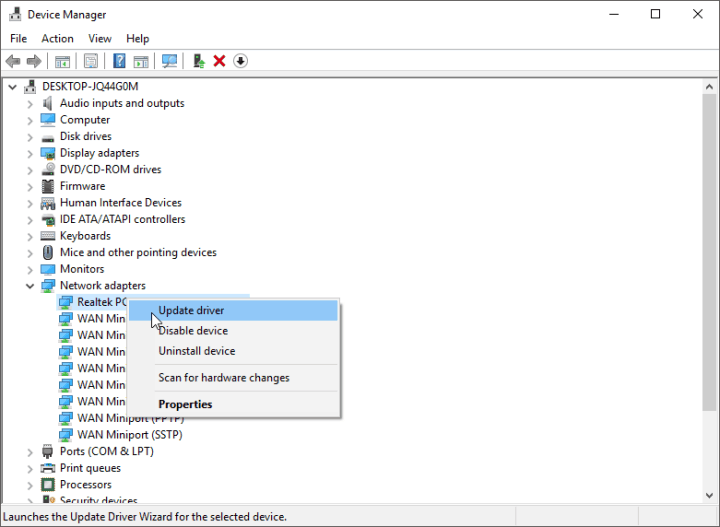

If this happens, manually download the driver software from the manufacturers website and install it on your computer. Note: In rare cases, Windows may fail to install the right driver. Restart your computer and Windows should automatically install the right driver software. On the confirmation pop-up, check Delete driver software for this device option and click on Uninstall. On Device Manager screen, expand Network Adapter entry > right-click on the Wireless Adapter and click on Uninstall device option. Hence, it is a good idea to note down your Wi-Fi and VPN Passwords. Note: This process will erase all your current Network Settings, including your Wi-Fi and VPN Passwords.

On the next screen, click on Reset Now button to Reset Network Settings on your computer to Factory Default Settings. Go to Settings > Network & Internet > scroll down in the right-pane and click on Network Reset option. Reset Network SettingsĪs mentioned above, the problem could be due to a change or corruption in Network Settings. Wait for your computer to search for the Latest Driver Software as available for the Wireless Adapter and follow the onscreen instructions to Install the driver software (If available). On the next screen, select Search Automatically for Updated Driver Software option. Tip: If you see multiple entries under Wireless Adapters, look for something that has Wi-Fi in it or says Network or 802.11b. On Device Manger Screen, expand Network Adapters entry > right-click on the Wirekess Adapter and click on Update Driver Software option. Right-click on the Start button and click on Device Manager. On Device Manger Screen, expand Network Adapters entry > right-click on your Wireless Adapter and select Disable Device option.Īfter 15 seconds, right-click on Wireless Adapter again and this time select Enable Device option. Right Click on the Start button and click on Device Manager.

If the Network Troubleshooter is unable to fix the problem, move to the next troubleshooting step. Wait for the troubleshooter to detect issues and follow the onscreen Instructions to fix problems on your computer. Go to Settings > Network & Internet > scroll down in the right-pane and click on Network Troubleshooter. If restarting did not help, see if the problem can be fixed by the built-in Network Troubleshooter as available in Windows 10. Restarting the computer can often fix network connectivity issues by closing stuck programs and processes, which might be causing the problem on your computer.


 0 kommentar(er)
0 kommentar(er)
